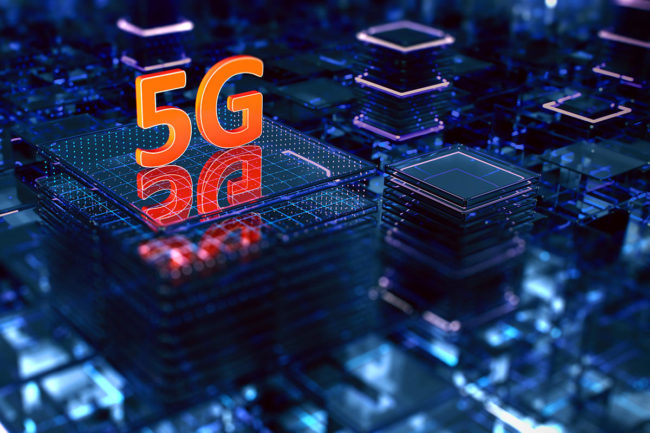For the first time in history, 5G is the talk of town globally. And in many months and years to come, it will become widely adopted first to meet the needs of fintech.
“Fintech is going to drive 5G, not the other way around,” said Shenzhen-based William Genovese, vice president of corporate strategy planning for banking and financial markets.
Companies such as Huawei, which is widely perceived as the leader in commercial 5G, are working on next-generation digital financial services. These (as opposed to traditional banking) will need the kind of speed and connectivity of super-fast wireless communications.
What really is 5G?
5G stands for fifth-generation mobile network. In 1982, telecom operators achieved throughput of 2.4 kilobits per second of data; in the 1990s the networks were fast enough to handle voice and messaging on then-trendy Nokia and Ericson mobile phones. Internet browsing and video in G3 and G4 now require speeds as much as 1 gigabit.
But 5G will enable network downloads as fast as 20 gigabits. Today most broadband is through fixed lines and fiber optics, but 5G will enable this enormous volume of data to move via mobile. It will also accelerate the ability of machines to share data, ultimately meaning every device in an urban area can be connected. And it allows latencies so low that machines will be able to conduct operations accurately, from autonomous driving to stock trading.
Most of these use cases are speculative, however. Telecom operators are rolling 5G out in hundreds of cities worldwide but without a clear path to profitability. The current business case is to give consumers super-fast downloads of video and games.
But Genovese, who made these comments from a recent presentation in Hong Kong, says those won’t be the things that drive real adoption. Consider instead emerging markets lacking even 3G today, due to the lack of cable: they can leapfrog straight to 5G. “There’s no bank branches in some of these places,” he said, “so as their economies grow, digital banks will need virtual tellers and virtual advisors.”
It will bring Convergence
5G is not occurring in a vacuum. On the contrary, it is part of a convergence of other technologies – with fintech at the vanguard of use cases.
Among these developments are edge computing, in which the computation and data storage occur on the device itself, rather than in a remote server – this itself being enabled by cloud computing. Edge computing is what makes the “internet of things” viable. While it may be a while yet before your toaster starts giving you financial advice, the bandwidth that 5G allows suggests all kinds of databases and devices will be interconnected, to give people new ways to visualize things, access information, and make decisions.
Although traditional banks and insurance companies are working to take advantage of what 5G will bring, Genovese says the advantage will tilt toward companies that are experienced with business models that cut across many sectors. In other words, the likes of Alibaba and Tencent, which are in a position to combine myriad technologies to power financial services.
“To drive that convergence from a mobile and digital perspective requires additional bandwidth and latency,” Genovese said.
From his perspective, technology has led banking through a series of historical eras, starting with informal banking, when everything depended on kinship and personal relationships (an era weirdly resurrected today by Bitcoin).
Genovese calls the coming era that of “ubiquitous banking”, in which banking becomes an embedded utility within many other industries, supporting lifestyle choices.
This raises several questions. First, how safe is this?
Today, banks are scrambling to adopt more security measures such as biometrics and two-factor authentication. Risk experts worry that as more functions go digital, we are creating new “surface areas” for hackers to exploit. The specter of an explosion of more connectivity, more APIs, more data, is more crime and less trust.
Genovese argues, however, that 5G, combined with other technologies such as biometrics, will make digital services safer – that we are today experiencing Peak Cybercrime, and 5G will allow institutions to detect fraud, authenticate users, trace funds, and defend their data much more effectively.
That still assumes these tech convergences are pursued, and deployment of 5G takes such questions into account.
“The discussion needs to go in the direction of 5G becoming more secure,” Genovese said.
Changing the customer experience
A second question: how will this change the customer experience with financial services?
Genovese says 5G will just further increase consumer expectations, which is a challenge for financial institutions. It will also enable scale for more market data and transactions, which should benefit capital-market players – but also give non-bank tech companies the opportunity to crack these services and become investment banks in all but name.
This is not actually a new trend: PayPal, the original payments fintech, now offers loans to small businesses. In a world still dominated by classical financial infrastructure, PayPal isn’t a threat to corporate banks; like many Chinese “techfins”, it is playing in a space that big banks don’t want to be in.
But 5G’s speed will enable e-commerce players, consumer tech companies, fintechs and virtual banks to offer a dazzling array of services that will overwhelm many incumbent banks, Genovese predicts.



